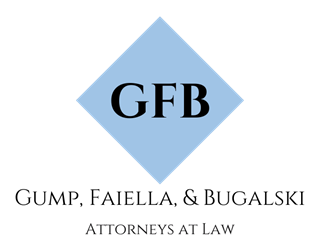CLIENT LOGIN
×Underinsured Motorist Coverage
Underinsured motorist coverage provides for the payment of benefits when you or another person in your car is injured by a driver who is insured, but the insurance is not enough to cover your losses. For example, a driver that causes injury to you has insurance coverage of $25,000, but you incur losses in excess of $50,000.
Losses can include medical costs, lost wages, pain and suffering, emotional distress, and even future lost earning capacity if your career is negatively affected because of your injuries. Underinsured motorist coverage from your own policy could help cover this gap. Like uninsured motorist coverage, it also covers hit and run accidents and pedestrian accidents.
The Cost of Healthcare
With the skyrocketing costs of healthcare, only one trip to the hospital can quickly result in medical expenses that exceed the limits of automobile liability insurance that covers many drivers. In virtually every state, automobile liability insurance is required by state law. This means that every driver must have an insurance policy that protects them in the event they are found liable for causing injury to another person while driving their automobile.
However, in most states, the minimum required limits are very low. Missouri only requires drivers to carry minimum automobile liability limits of $25,000 per person and $50,000 per accident. Some states have even lower requirements. A serious automobile accident could end up costing you far more than that. Because you cannot count on the other driver to have more than a minimum amount of insurance, if any at all, it makes sense to carry underinsured motorist coverage on your own automobile insurance policies to protect you and your family in the event that you or a family member incur injuries and damages because of someone else’s negligence.
Underinsured Motorist Coverage
Underinsured motorist coverage is usually considered personal coverage that follows you as an insured, even if you are injured while riding in someone else’s vehicle. For instance, if you are a passenger in a friend’s vehicle and a third person causes an accident resulting in injuries to you, your underinsured motorist coverage could pay if the other drivers did not carry enough insurance to cover your losses. Additionally, if you have passengers in your vehicle, your own underinsured motorist coverage would cover anyone in your vehicle, even if they did not carry their own underinsured motorist coverage or if they did not own their own vehicle.
Certain types of car insurance, such as collision and comprehensive coverage, decrease in usefulness when the value of your vehicle declines. However, underinsured motorist coverage is an important type of coverage to consider even if you drive an old car that is not worth protecting with collision or comprehensive coverage, since underinsured motorist insurance can cover medical and other expenses that result from an accident.
What Is Stacking?
Underinsured motorist coverage can sometimes be “stacked”, depending on the insurance policy language. Stacking refers to the ability to collect additional underinsured motorist coverage if you insure multiple vehicles, either on the same policy or separate automobile insurance policies. Stacking may also be possible if other facts are discovered which can demonstrate an ambiguity or misrepresentation in the insurance policy.
These facts can include promises made by the insurance company when it sold the policy in company advertising and brochures, if those promises conflict with the policy terms or statements by the companies agents. Stacking of underinsured motorist coverage is an issue that is litigated frequently. There are multiple reasons for this, but as a consumer, one wants to be assured that you receive all of the insurance coverage for which you have paid a premium.
We Have Your Best Interests in Mind
In a perfect world, everyone would purchase enough automobile liability insurance, so once fault was determined, the insurance company of the at-fault driver would pay for the losses and all would be well. However, as we all know, the real world is not perfect and uninsured and underinsured motorist coverage exists to help with those imperfections. Even then, there can be unexpected consequences when you try to collect those damages.
At this point, you must make a claim against your own insurance company for those damages which rightly should have been paid by the other driver’s own insurance policy—if the negligent driver had purchased enough insurance to cover your losses.
Suddenly, your insurance company now acts like the other driver’s insurance company because your company now may have to pay for your damages. It is an unfortunate part of the claim process that may transform your insurer from an advocate to an opponent. However, one should not let that deter you from purchasing insurance protection for you and your family, and then pursuing a claim if it is warranted.
Pursuing a Claim
Pursuing claims against an insurance company, even if it is your own insurance company, can be complex. How much insurance did I purchase and what does it cover? While it may seem simple enough, all insurance policies contain policy language that can be specific to that particular company or to a particular state, and not all underinsured motorist coverage is created equally. Many policies contain exclusions that may prevent an insured from obtaining all of the coverage that person thought he or she paid for.
For instance, in a case recently decided by the Missouri Court of Appeals, Eastern District, the plaintiff was unable to recover any underinsured motorist coverage from her own insurance company policy. This is true even though she had purchased underinsured motorist protection with limits of $250,000 per person/ $500,000 per occurrence. Naeger v. Farmers Ins. Co., Inc., Case No. ED100012 (Mo. Ct. App. May 6, 2014.)
In October 2009, the plaintiff was a passenger in a friend’s vehicle when it was struck by an underinsured motor vehicle, resulting in serious injury to the plaintiff. She settled with the liability insurance carrier for the limits of his coverage. Her friend was insured for underinsured motorist coverage and she settled with his insurance as well, but together, the available insurance coverage was not enough to fully compensate her for her damages.
The plaintiff then filed a claim for underinsured motorist coverage with her own insurance company for the remainder of her uncompensated damages, but the insurance company denied her claim. Little did she know, there was a clause in her automobile policy that excluded underinsured motorist coverage if the vehicle she was occupying was a vehicle she did not own which had any underinsured motorist coverage. Although she filed suit based on alleged ambiguities in the policy and reasonable expectations of coverage, the courts upheld the policy exclusion and denied her any underinsured motorist coverage on her own automobile insurance policy.
The irony of the situation is that if the plaintiff had been a passenger in her own vehicle or if her friend’s vehicle had NO underinsured coverage, then she would have been entitled to the entire $250,000 policy limits of underinsured motorist coverage for which she paid premiums.
Was Your Claim Denied?
On the other hand, the insurance company may be wrong in denying your claim. In another recent case, the Missouri Court of Appeals, Western District, sided with the injured party and against the insurance company. Fanning v. Progressive Northwestern Insurance Co., W.D. 75943.
In that case, the plaintiff was seriously injured while riding his motorcycle when he was involved in an accident with another vehicle. The other driver was negligent and caused the accident. The injured plaintiff collected $50,000, the liability policy limits of the negligent driver and made a claim with his own insurance company for underinsured motorist coverage. The declarations page of the plaintiff’s insurance policy indicated that he had purchased $50,000 of underinsured motorist coverage. It was not disputed that his damages exceeded $100,000. However, the insurance company denied the claim. The insurance company claimed that the other driver was not “underinsured” because the other driver’s limits were the same as the underinsured coverage limits on the plaintiff’s policy.
The injured plaintiff contended that since he incurred damages in excess of $50,000 paid by the negligent driver’s insurance, he should be able to collect up to the limits of $50,000 under the terms of his underinsured motorist insurance coverage. The court agreed with Plaintiff.
The Missouri Court of Appeals held that the insurance policy was ambiguously written and that the policy could be interpreted to provide $50,000 coverage for Plaintiff’s injuries. It is up to the insurance company to use clear language in their insurance policies and if the language is ambiguous, it will be construed in favor of the consumer.
Dealing With Insurance Companies
What happens if you paid for underinsured motorist coverage but your insurance company refuses to pay for your damages? If you think your insurance company may have wrongfully denied your insurance claim, you should contact a lawyer who is familiar with accident claims and insurance law as soon as possible. An attorney experienced in underinsured motorist claims can analyze your situation including how the accident occurred, the specific policy language used in your insurance policy, and evaluate how the various insurance coverages may work together.
Powered by



